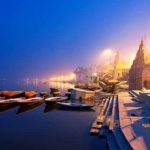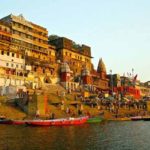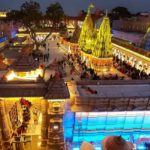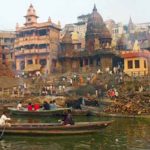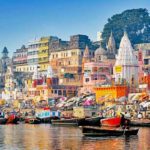10 Must Things to do Varanasi is known as one of the world’s holiest cities. Throughout the streets, temples, ghats and so many things to do in Varanasi there’s so much culture, religion and devotion. I spent 10 days in Varanasi immersing myself in the people and places of absolute devotion. These are the 13 things I suggest most while exploring the city, to do in Varanasi. The center of action can be found at the Banaras ghats in Varanasi — a series of giant steps leading up to the Ganges River. In the morning, the devotees descend the stairs to wash away their sins in the holy water, and in the evening they prepare for prayer ceremonies fire-fuelled.
In the labyrinthine old town the momentum continues throughout the day. Legend has it that no detailed map of the intricate network of winding alleys in Varanasi has ever been drawn. Wait ahead to get lost and witness some of your life’s best sightseeing.
Would you like to make the most of your time in “City of Light”? Check out our list of the best Varanasi locations to visit.
A history of Varanasi
Varanasi is the holiest city in India. First of all, due to its location on the Holy Ganges, but also due to its historical and religious importance. It was already listed in ancient Hindu books like the Vedas as the City of Lord Shiva. It has also been the capital of a number of Indian kingdoms.
Varanasi Tour Planner lies at the heart of Hindu culture and its ghats are the best places to see Varanasi in practice. Locations where steps lead to the Ganges and which are used for almost everything. Varanasi has hundreds of them, each with histories and legends of their own. A walking tour of the Varanasi along the Ghats will be a highlight of your journey to India.
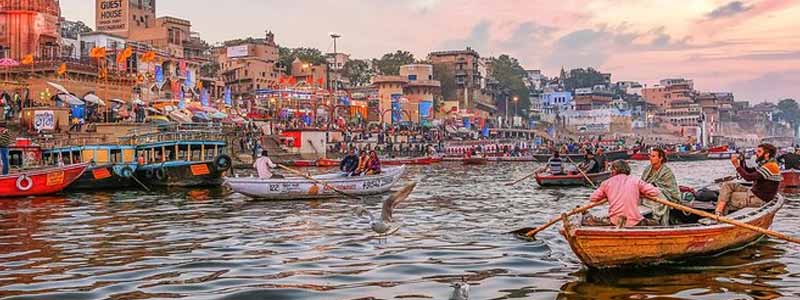
Boat Ride in Ganges River
The Ganges River is among India’s most famous natural sites. The river spreads southeast from the northern Himalayas to the Bay of Bengal. Between 400 million and 600 million people depend on the Ganges River for the regular bathing and drinking water.
Hindus come from all over the world to Varanasi to purify themselves in the water of the holy Ganges and to perform rituals along the hundreds of ghats along the river. For visitors, the river helps provide a fixed point of reference to travel around the area, and you can no doubt spend a lot of time sightseeing around the Ganges and watching life happen.
Consider waking up early and taking a trip down the river by sunrise — negotiate with one of the countless boatmen hanging along the ghats.
One of the top things to do in Varanasi in the afternoon or early evening is to buy a small floating offering filled with fresh flowers and a candle, and release it into the Ganges River. The blissful experience will connect you more deeply with Hindu culture and stay in your mind for years to come.

Take Bath in Ganges
The holy Ganges River is offering a spiritual charm for Varanasi. Ganges River Waters are sacred. The Holy River is offering redemption to those who bathe in the mud. Pilgrims from all over the world take a dip in the river, no matter their age, to absolve their sins and attain moksha; salvation forms the process of birth and death.
There are more than 84 Ghats in Varanasi with stairs leading to the river. Bathing occurs here seen after the dawn crack. People chant prayers that will appease the Goddess of the River.
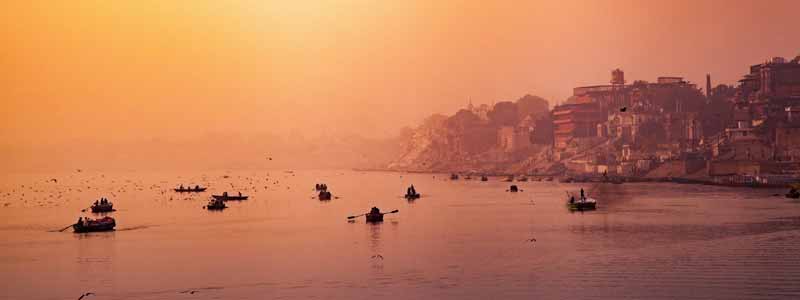
A Sunset Stroll Along The Ghats
The world’s holiest river, the Ganges, is a daytime spectacle but a peaceful, magical place at sunrise. The sky is lit with light pastel colors as a few vessels sail up and down the river. The cruise will float you through all the numerous ghats, going through several temples along the way. There is still a lot of activity on the banks of the Ganges even at sunrise, That makes it a favorite thing for me to do in Varanasi. Locals are taking their baths in the morning, washing tons of clothes and setting up stalls and shops for a business day. I just arrived at 5 a.m., and in seconds hired a boatman. I charged 250 rupees for 2 hours, but for a 100 rupees you can get a 1 hour ride, so it’s up to you how hard you ‘re going to deal. However, that is the rough price as far as I heard.
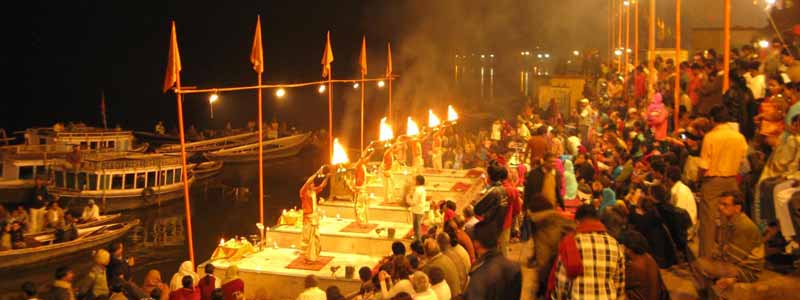
Evening Aarti Ceremony at Ganges River
Watching the Evening Aarti Ceremony is definitely an opportunity once in a lifetime. The magnificent event has to be seen from the Dasawamedh Ghat where beautiful rituals unfold before your eyes. During this case, brass lamps of large dimensions are used, followed by chants and crowds of people waiting to pray.
Visit the Aarti for at least an hour if you want to collect the experience in the best possible way. You will observe at this time how five elevated planks are positioned at the edge of the Ghats stairs, and brass lamps are cleaned and ready for the occasion.
It is also important to see how priests donate similar dhotis and kurta for prayer and ceremony at Aarti. Those who want to click pictures from their cameras should visit the Ghats in boats at night, as this will allow one to catch anything in attention easily.
These brass lamps are very heavy, weighing approximately four and a half kilograms. But make sure you only bring one if you can keep it in the crowds. Spectacular images form as soon as they are lit. The night sky shines with the radiance of these lamps, while the sticks of incense fill the atmosphere with aromas of various kinds. The Aarti ceremony is held every night, and a ritual of 45 minutes is held for the same purpose. Normal time in the evening is 6:45.
Looking for weavers village in Varanasi?
The Varanasi weavers can be found primarily in semi-rural areas of Shivpuri and Banda Naraini constituency. Basically they are Muslims. Their entire family is involved in the handloom business from where they manufacture sarees with different motifs and designs, in particular ‘buti’ and ‘buta’ (the single flower design on the saree is called buti and the large flower design on the saree is referred to as buta).
They start their work from 8 am in the morning and end in the evening until 6 pm. Doing this daily for 3-5 weeks allows them to make two beautiful silk sarees with motifs and designs on them and other banarasi sarees. While kids go to school, the men learn how to operate looms, learn designs and finally learn how to move them to metal stencils to build specific designs types of motifs on weaves. The women on the other hand join the teamwork by maintaining the threads on the looms.
Go for a Sightseeing Tour of Sarnath
Hinduism definitely has a foothold on Varanasi, but Buddhism has a large presence in the village of Sarnath, less than 12 kilometers away. Here you’ll find the Dhamek Stupa, a huge 43.6 meter tall, 28 meter diameter stone and brick building. Designed more than 1,500 years ago, the stupa was a replacement for a structure dating back to 249 BCE.
The devotees believe the Buddha came to Dhamek Stupa to give his first sermon, which revealed the Eightfold Path after the enlightenment had been achieved. Look at the beautiful carvings of birds, humans and flowers that cover the stupa ‘s walls as you walk around the attraction.
Sarnath also has plenty of other tourist spots that make Varanasi a worthwhile day trip destination. Check out the Chaukhandi Stupa (a Buddhist shrine dating back to at least the 6th century), then head to the Sarnath Museum to see Ashoka’s Lion Statue, a sculpture that used to sit atop the Ashoka Pillar in 250 BCE and became India’s official emblem in 1950. Round out the day with sightseeing at the peaceful Tibetan Temple before making your way back to Varanasi.
Dasaswamedh Ghat
Dashashwamedh Ghat is known for performing the liveliest aartis along the holy Ganga River to plunge tourists into godly bliss. A popular member of the Varanasi tourist attractions, Dashashwamedh Ghat, got its name because of Lord Brahma ‘s story of sacrificing 10 horses, or das Ashwamedh, to perform a yajna. The ghat is illuminated by the light each sunset of diyas lit to commence the sacred rituals.
Priests stand in unison and chant prayers as they pass the diyas in circles and pay their obedience to the creator. A large crowd gathers to take part in the ceremony. Hundreds of visitors thronging the ghat to relax on the steps leading to the river waters are experiencing the soothing atmosphere that sets in during the evenings. You can also see tons of floating boats in the water. Due to the divine ambiance and religious significance, it is a must amongst the places to visit in Varanasi in 2 days.
Manikarna ghat (cremation ghats)
Manikarna ghat (cremation ghats) The cremation ghats are the most daunting of all the places to see in Varanasi. Hindu ‘s believe a cremation on the banks of the Ganges River would set the soul free from the cycle of death and rebirth.
The bodies are mounted on wood tables, and the rituals are conducted in full view to be seen by all. Burning in Varanasi is a luxury but not everybody can bear the expenses.
I was invited only behind the cremation ghats to visit the elderly house. I’ve been wondering about my work with elderly people in the Netherlands. Several elderly women lived in one room where they had nothing but a bed and a little table.
They came from all over India, but when their time came they sold all their belongings and moved to Varanasi To make sure that their remnants merge with the holy Ganges. The women, widowed already, seemed to be at peace with their coming end.
They also seemed to have no memory of the fact that the owner was bringing in visitors in search for donations that would be paying for the funerals according to him. I left tough with mixed feelings and after a little research it’s obvious that a lot of scams are going on around in this area.
Shri Kashi Vishwanath Temple
In order to enter the Shri Kashi Vishwanath Temple, a holy attraction about four kilometers from the Varanasi Junction railway station near Manikarnika Ghat, Hindu pilgrims and tourists travel thousands of miles. The impressive building, dedicated to the Hindu deity Shiva, has earned its striking spire the nickname “The Golden Temple” — plated in some 800 kilograms of pure gold. This temple ‘s distinctive style has been continued to influence the architecture of hundreds of other temples throughout India.
Strict security measures surrounding the complex allow visitors to store their cameras, tablets, bags and other belongings in a nearby rentable locker. Wait in line with hundreds of other tourists to dig out your shoes, all eager to touch the 60-centimeter-tall, sin-absolving Shiva lingam in a silver alter. It’s an intense, yet rewarding experience



